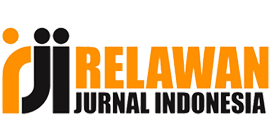Language Choice and Attitude among Native Lubuklinggau Community
DOI:
https://doi.org/10.31539/edulia.v1i2.2348Abstract
This study aims to explain the choice of language and domains in the Lubuklinggau indigenous people, language attitudes towards the selected language, and the factors determining language choice in the Lubuklinggau indigenous people. The research method used is the descriptive qualitative method. The subjects of this study were the indigenous people of Lubuklinggau. The data collection techniques used in this study were questionnaires and interviews. This study shows three common languages commonly used by the Lubuklinggau indigenous people and seven domains. The three languages are PMLD, BI, and Cul. In conclusion, the Lubuklinggau indigenous people usually use three common languages in seven territories. The choice of language is influenced by several factors such as dominant language, solidarity, prestige and politeness.
Keywords: Attitude, Language Choice, Language Domain, Maintenance Multilingualism
References
Ansah, M. A. (2015). Language Choice in Multilingual Communities-The Case of Larteh, Ghana. Legon Journal of the Humanities, 25, 37-57. http://dx.doi.org/10.4314/ljh.v25i1.3
Badan Pusat Statistik Lubuklinggau. (2017). Kota Lubuklinggau dalam Rangka Lubuk Linggau Municipality in Figures 2017. https://lubuklinggaukota.go.id/public/view-pdf/15
Barnes L., & Van, A. K. (2008). An Investigation into the Maintenance of the Maale language in Ethiopia. African Identities, 6(4), 431–444. https://doi.org/10.1080/14725840802417984
Coultas, A. (2003). Language and Social Context. England: Taylor & Francis e-library
Dweik B. S., & Qawar, H. A. (2015). Language Choice and Language Attitudes in a Multilingual Arab Canadian Community: Quebec-Canada: A Sociolinguistic Study. British Journal of English Linguistics, 3(1), 1–12. https://www.researchgate.net/publication/278785088_LANGUAGE_CHOICE_AND_LANGUAGE_ATTITUDES_IN_A_MULTILINGUAL_ARAB_CANADIAN_COMMUNITY_QUEBEC-_CANADA_A_SOCIOLINGUISTIC_STUDY
Francis, N. (2007). Carol Myers-Scotton: Multiple Voices: An Introduction to Bilingualism. Applied Linguistics, 28(1), 155–158. https://doi.org/10.1093/applin/aml055
Ginting, S. A. (2018). Language Attitude of Sellers in Traditional Market Toward Karonese Language. English Language Teaching, 11(7), 125-130. https://doi.org/10.5539/elt.v11n7p125
Granhemat, M., & Abdullah, A. N. (2017). Gender, Ethnicity, Ethnic Identity, ad Language Choices of Malaysian Youths: The Case of the Family Domain. Advances in Language and Literary Studies, 8(2), 26-36. http://dx.doi.org/10.7575/aiac.alls.v.8n.2p.26
Holmes, J. (1992). An Introduction to Sociolinguistics. London: Longman Group
Jendra, I. I. (2010). Sociolinguistics: The Study of Societies Languages. Yogyakarta: Graha Ilmu
Wardhaugh, R. (2006). An Introduction to Sociolinguistics (Fifth Edition). Oxford: Blackwell Publishing

